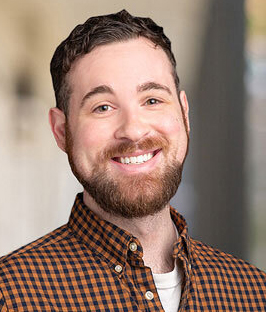Defining Our Lane: The Link Between Climate Change, Cancer Equity, and Radiation Oncology
In many ways, health inequity—differences in health care access and outcomes—and climate change—long-term shifts in temperature and weather patterns—are two sides of the same coin. Both most acutely impact populations vulnerable to social or economic marginalization. Both are exacerbated by divisive politics and policies. And both are intimately intertwined with cancer care. In this blog, we will describe the ways in which climate vulnerability—the degree to which people or communities are at risk of experiencing the negative impacts of climate change —affects the radiation oncology patient population and workforce, and discuss opportunities to work together to improve both climate health and cancer equity.
- Climate change as a carcinogen. Climate change increases cancer risk and rates in many ways, including rising temperatures, contaminated food and water supply, and poor air quality. Ultraviolet radiation is a risk cancer for several types of skin cancer, and is directly impacted by rising temperatures and ozone depletion. Food and water quality are also impacted by climate change, with poor water supply having increased levels of carcinogenic contaminants. Increases in natural disasters such as wildfires and hurricanes caused by climate change also have downstream effects on cancer development. For example, wildfire smoke generates known carcinogens such as polyaromatic hydrocarbons and formaldehyde, which directly affect those not only in the immediate vicinity of the event, but also more remote populations due to shifting weather patterns carrying wildfire smoke to greater distances. Recognized as a carcinogen by the International Agency for Research on Cancer in 2013, air pollution and decreased air quality have been linked to increased cancer rates and lead to more climate change, creating a vicious cause-effect cycle.1
- Disruptions in access to cancer services. An increase in natural disasters has disrupted access to health care facilities that aim to prevent, detect, diagnose, and treat cancer. The burden of diminished care further exacerbates existing inequities in health care access, particularly for patients in rural communities who travel great distances to obtain specialized medical services, such as radiation therapy. A recent study found that the California wildfires have had a profound effect on radiation oncology in the state.2 A majority (61%) of respondents said that their clinics have been impacted by wildfires in the past 5 years with sequelae including staffing shortages, power outages, and clinic closures. While many of these clinics were in more heavily populated areas, 100% of clinics operating in rural areas were affected by the wildfires. Another study demonstrated a significant decrease in survival of patients receiving radiation therapy for locally advanced non-small cell lung cancer during a declared hurricane disaster when compared with those undergoing radiation therapy under usual conditions.3 Furthermore, longer declared disasters were associated with worse cancer outcomes. As climate events become more common, the impact of disrupted cancer care will only grow larger.
- The carbon footprint of radiation oncology. The provision of radiation therapy services contributes to the climate change crisis in several ways. A major contributor is emissions from heavily utilized equipment. A recent study found that for the most common cancer types, the CO2-equivalent emissions ranged from 0.28 to 36.4 kg CO2 per external-beam radiation therapy course (EBRT), the equivalent of burning 40.1 pounds of coal.4 The same study found the energy consumption of an EBRT course to be 1.83 to 85.68 kWh depending on the type of cancer treated, which is comparable to driving 91.4 miles in an average passenger vehicle. In addition, radiation therapy machines on standby utilize even more energy and generate significant CO2 Other drivers of the radiation oncology carbon footprint include travel time for patients undergoing radiation therapy. In part due to specialized equipment and expertise required, many radiation therapy centers in the US are centralized in larger, more densely populated cities. Extensive travel to and from treatment for the weeks of radiation therapy contributes to emissions and creates financial toxicity for patients.
- Opportunities to improve climate health and cancer equity. In recent years, a shift toward hypofractionation, or short-course radiation, has changed the treatment standards in nearly every disease site. These shorter courses reduce facility energy expenditure and improve access to care and quality of life for patients. Similarly, the provision of care through telehealth was a major advance during the early years of the coronavirus pandemic, but did not become a permanent standard of care in many states. Better use of digital technology and alignment of reimbursements for telehealth visits will facilitate both greater access to cancer care and a reduced carbon footprint for radiation oncology. Finally, professional society conferences have long been a means the radiation oncology workforce to disseminate knowledge and build national and international networks. During the early years of the pandemic, many conferences transitioned to virtual or hybrid formats, allowing those with heavy clinic volume, personal caregiving responsibilities, or medical conditions precluding travel to attend and participate. In more recent times, many conferences have returned to in-person attendance with no virtual options, levying a large carbon footprint associated with air travel, car travel, and single-use consumables and excluding those who cannot travel. Opportunities for inclusion of members who cannot attend a conference in person will elevate our science and advance the field.
Cancer equity, in terms of both patient outcomes and workforce diversity, is affected directly and indirectly by climate change. In 2023, the American Society for Radiation Oncology (ASTRO) convened a Climate Change and Health Equity Task Force, released a Climate Change Statement.5 With these important steps, ASTRO acknowledged the impact of climate change on health equity and aimed to address these challenges moving forward. In radiation oncology, climate health is more than our lane; it is the foundation upon which we build our teams, technology, and treatments to speed toward the goal of ending suffering from cancer. We can accelerate our progress by understanding the interconnectedness of climate health, cancer equity, and radiation oncology, and by collectively advocating for a healthier planet.
References
- Straif K, Cohen A, Samet J. eds. Air Pollution and Cancer: IARC Scientific Publication No. 161, 1st ed. Lyon, France: International Agency for Research on Cancer, 2013. Accessed March 21, 2024. http://www.iarc.fr/en/publications/books/sp161/index.php
- Lichter KE, Baniel CC, Do I, et al. Effects of wildfire events on California radiation oncology clinics and patients. Adv Radiat Oncol. 2024;9(3):101395. doi:10.1016/j.adro.2023.101395
- Nogueira LM, Sahar L, Efstathiou JA, Jemal A, Yabroff KR. Association between declared hurricane disasters and survival of patients with lung cancer undergoing radiation treatment. JAMA. 2019;322(3):269-271. doi:10.1001/jama.2019.7657
- Shenker RF, Johnson TL, Ribeiro M, Rodrigues A, Chino J. Estimating carbon dioxide emissions and direct power consumption of linear accelerator–based external beam radiation therapy. Adv Radiat Oncol. 2023;8(3):101170. doi:10.1016/j.adro.2022.101170
- Climate change statement – American Society for Radiation Oncology (ASTRO). American Society for Radiation Oncology. 2023. Accessed March 21, 2024. https://www.astro.org/Patient-Care-and-Research/Climate-Change-Statement

Seth Seifert, MA
Third year medical student, Spencer Fox Eccles School of Medicine, University of Utah

Gita Suneja, MD, MSHP
Associate professor, Department of Radiation Oncology, Spencer Fox Eccles School of Medicine, University of Utah